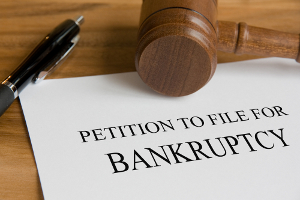 Chapter 13 bankruptcy allows debtors to reorganize their debts. Debtors propose plans to the bankruptcy court stating that they will pay a trustee a plan payment each month for 36 to 60 months. The trustee takes this money and pays it to the creditors as provided for in the confirmed plan. The plan payment is calculated by adding together the secured claims being paid through the plan, the priority claims, the amount being paid to the unsecured creditors, and administrative costs.
Chapter 13 bankruptcy allows debtors to reorganize their debts. Debtors propose plans to the bankruptcy court stating that they will pay a trustee a plan payment each month for 36 to 60 months. The trustee takes this money and pays it to the creditors as provided for in the confirmed plan. The plan payment is calculated by adding together the secured claims being paid through the plan, the priority claims, the amount being paid to the unsecured creditors, and administrative costs.
Secured claims are treated in several different ways in Chapter 13 bankruptcy cases. Debtors can choose to either pay the full claim through the plan, pay an arrearage claim, surrender the collateral and pay nothing, or pay the claim outside the plan. An arrearage claim is a delinquent amount owed under the original contract terms. For example, if you have a car with a note, the monthly payment is $300 and you are two months behind, then the arrearage is approximately $600. When calculating secured claims being paid through the plan, don’t forget to account for interest on the claim using an amortization calculator.
Priority claims are paid in full in Chapter 13 bankruptcy cases. This description usually refers to income taxes or child support arrears. However, income tax can also be a secured claim or an unsecured claim. Priority creditors are paid no interest in Chapter 13 plans filed in Texas.
Unsecured claims are paid if the debtor has nonexempt property or disposable income. Nonexempt property is calculated by applying state or federal exemptions to the value of the property and seeing if there is any portion that is still nonexempt after applying the exemptions. Debtors must pay to the unsecured creditors at least an amount equal to the value of their nonexempt property. Disposable income is calculated using a means test that calculates average income for the last six months then deducts standard IRS deductions to see if anything is left. The amount left represents monthly disposable income. That amount is multiplied by sixty to determine how much is available to be paid to the unsecured creditors. Debtors must pay at least the value of their nonexempt property to the unsecured creditors but may have to pay more if they have disposable income that exceeds the value of the nonexempt property.
Once the amount of the secured claims, priority claims, and the amount to be paid to the unsecured creditors is calculated, add the portion of the debtor’s attorney’s fees to this total. Multiply the sum of all claims and the attorney’s fees by the percentage that is to be paid to the trustee as an adiminstrative fee, which is listed on the Office of the U.S. Trustee’s web site. This amount is then divided by the number of months in the plan, and the resulting number is the monthly plan payment amount.
For more information about Chapter 13 plans in Plano TX, please contact a Plano TX bankruptcy attorney.